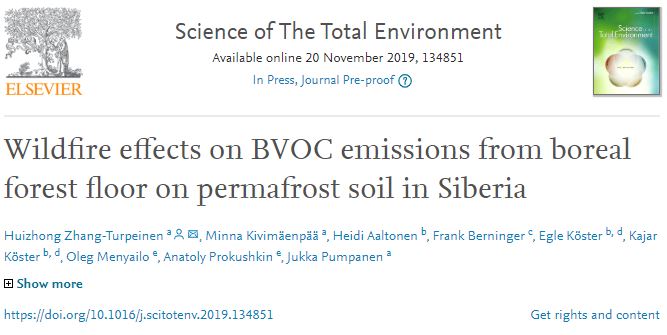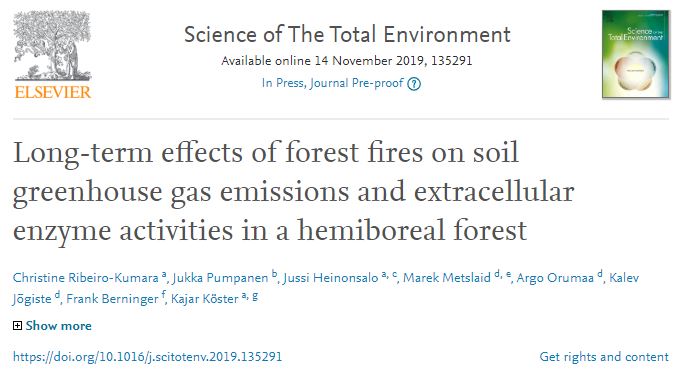
New paper by Zhang-Turpinen et al. studied the long-term effects of wildfire on forest floor BVOC emission rates along a wildfire chronosequence in a Larix gmelinii forest in central Siberia – how forest wildfires and the subsequent succession of ground vegetation, as well as changes in the availability of SOM along with the deepened and recovered active layer, influence BVOC emission rates.
The results showed that forest floor acted as source of a large number of BVOCs in all forest age classes. Monoterpenes were the most abundant BVOC group in all age classes. The total BVOC emission rates measured from the 23- and >100-year-old areas were ca. 2.6 times higher than the emissions from the 1-year-old area. Lower emissions were related to a decrease in plant coverage and microbial decomposition of SOM after wildfire. The results also showed that forest wildfires play an important indirect role in regulating the amount and composition of BVOC emissions from post-fire originated boreal forest floor. This could have a substantial effect on BVOC emissions if the frequency of forest wildfires increases in the future as a result of climate warming.
